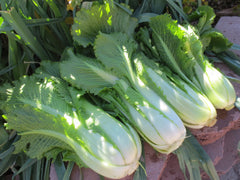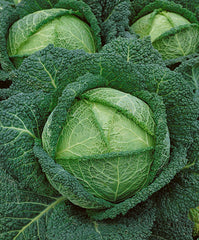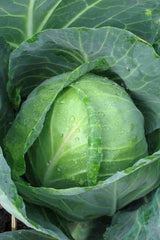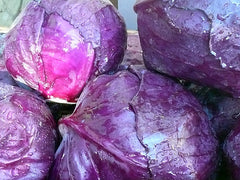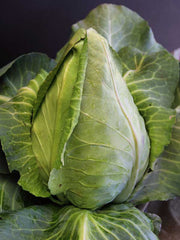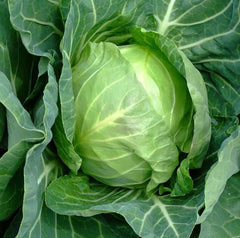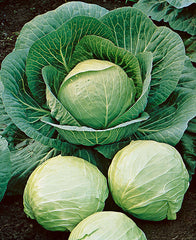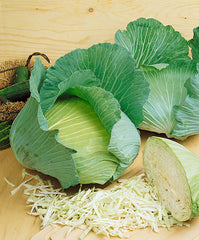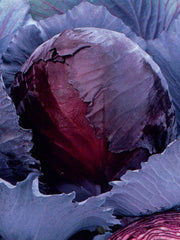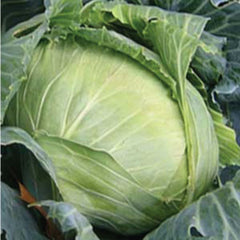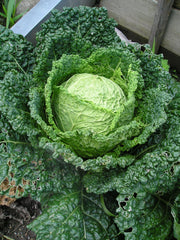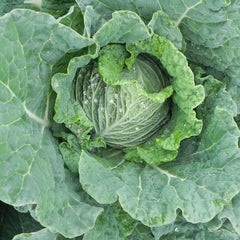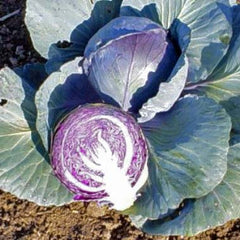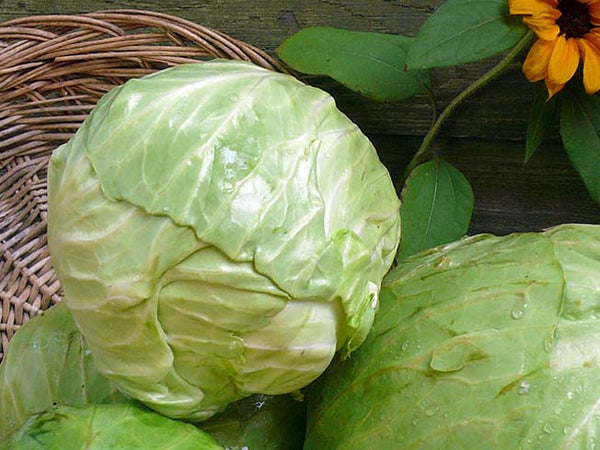Green Mariner
Brassica oleracea capitata
HOW TO GROW CABBAGE
Start indoors 4-6 weeks before last frost, plant out 4 weeks before frost. For fall harvest, transplant 16 weeks before first frost for storage types, 13 weeks for fresh types, without additional protection. In a hoophouse, you can plant 2-3 weeks later. Direct sow when daytime soil temperatures warm to 75˚F. Cool weather crop, optimally brown between 60–70˚F. For mild winters where tamps are rarely below 32˚F, transplant September to February. Drought sensitive, mature heads are vulnerable to splitting under stress from rain following a dry spell, keep moisture even. Mature when the tight head leaf begins to fold back on itself. Soil pH 6–7.5. Hardiness zones 5-9. Biennial.
Days from maturity calculated from the date of seeding. Average 7,000 seeds per ounce. Average 29M seeds per acre. Federal germination standard: 75%. Usual seed life: 4 years.
Planting Depth 1/4–1/2”
Soil Temp. Germ. 50-75˚F
Days to Germ. 10-15
Plant Spacing 12–18”
Row Spacing 18–36”
Days To Maturity 75–80
Full Sun, Moist Well Drained Soil
Days from maturity calculated from the date of seeding. Average 7,000 seeds per ounce. Average 29M seeds per acre. Federal germination standard: 75%. Usual seed life: 4 years.
Planting Depth 1/4–1/2”
Soil Temp. Germ. 50-75˚F
Days to Germ. 10-15
Plant Spacing 12–18”
Row Spacing 18–36”
Days To Maturity 75–80
Full Sun, Moist Well Drained Soil
- 100 Seeds$3.50
- 1000 Seeds$14.50
Selected from Bingenheimer seed of Germany for winter hardiness and flavor. Tolerates cold weather, shows some resistance to black spot in winter, and stores well. Transplant into the field in July for late fall harvest. Simply the sweetest flavor fresh from the field we’ve experienced. Limited quantity, but we like...
Selected from Bingenheimer seed of Germany for winter hardiness and flavor. Tolerates cold weather, shows some resistance to black spot in winter, and stores well. Transplant into the field in July for late fall harvest. Simply the sweetest flavor fresh from the field we’ve experienced. Limited quantity, but we like this one so much we want to share it. Tested negative for black leg. Tags: Harvest: Early, Color: Green, Size: Medium, Season: Spring Fall, Certification: Organic.
Learn More
Meet Your Farmer
We promote fair trade, organic practices and environmental responsibility throughout the Restoration Seeds supply chain. Below are the family farmers and seed suppliers who bring our open pollinated seeds to you.
Nash’s Organic Produce
Certified Organic by WA Dept. of Ag.
Seed grower since 1979


Preserving seed is a skill every organic farmer must have, and Nash has been doing it for years. He routinely saves carrot, cabbage, kale and spinach seeds, along with all of the grains. The team at Nash’s is farming about 450 acres: 75 acres of vegetables, berries and orchard; 150 acres of grain; 20 acres of organic seed; 50 acres devoted to pigs, poultry, and compost; and the rest is fallow or in hay. The farm employs about 25 people year ‘round and 40 at the peak of the season, making the it one of the larger private-sector employers in Sequim; and sells at 7 local farmers markets and wholesale.
Reviews
